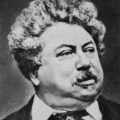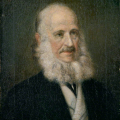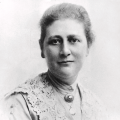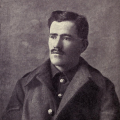John Charles Frémont
The Pathfinder
Today is the anniversary of the death of the American explorer, soldier, and the first Presidential candidate of the Republican Party, John Charles Frémont.
Frémont is remembered as “The Pathfinder” after helping many Americans who were heading West by creating documents and maps of his expeditions. In fact, John and his wife, Jesse, created an entire map of the Oregon Trail.
Now, when Frémont saw Nebraska for the first time, he didn’t see merely an endless prairie; he saw beauty. To Fremont, the entire state was one big garden, accentuated with fertile soil, swaying grasses, and wildflowers as far as the eye could see.
Fremont was one of the first explorers to write about cottonwood trees. He discovered them near Pyramid Lake in Nevada on Jan 6, 1844. Years later, botanists would name the cottonwood in his honor, calling it the "Populus fremontii."
Cottonwoods are the fastest growing trees in North America. And, the Cottonwood was sacred to Native Americans. To the Apaches, the Cottonwood was a symbol of the sun. In Northern Mexico, Cottonwood boughs were used in funeral rights and Cottonwood was a symbol of the afterlife.
And, there's an old Native American Legend that tells how the Cottonwood tree gave birth to the stars. For a time, the tree held the stars and kept them safe. But then, one late spring, the stars were released until they filled the night sky. And, every spring, we can remember the legend when we see the female trees release their star-shaped seeds into the air.
Now when I was growing up, all of the beautiful elm trees at my childhood home succumbed to Dutch elm disease. My parents selected cottonwoods because they knew they would grow quickly - up to six feet or more each year. They couldn't stand how naked the house looked without the beautiful large elm trees.
In truth, there's no comparison between a cottonwood tree and an elm tree, which is regarded as one of the most beautiful trees by landscape painters. Still, Cottonwood trees do grow quickly. But be forewarned: Cottonwood trees often have weak wood that can easily be injured or damaged.
Cottonwood trees are in the Poplar species. Only the female trees produce the fluffy cotton seeds that float through the air and collect in your garden and garage in June.
This post was featured onThe Daily Gardener podcast:
helping gardeners find their roots,
one story at a time






